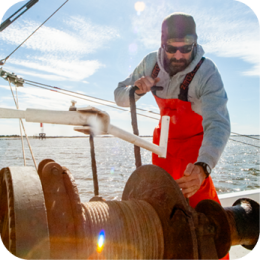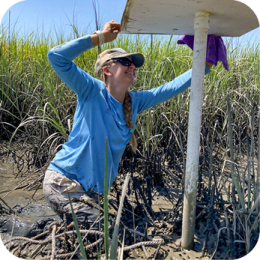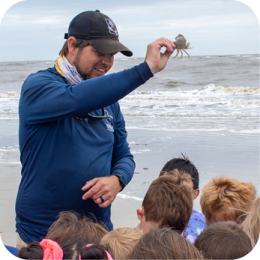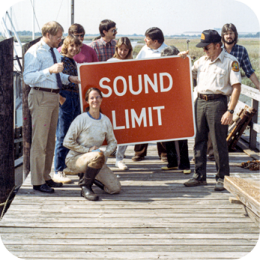
Season Dates
NOAA Fisheries is opening federal waters in the Southeast, including Georgia, for recreational harvest of Red Snapper (Lutjanus campechanus) on two days in 2025:
- The recreational sector will open for harvest on the following two days:
- July 11, 2025 (Friday) and July 12, 2025 (Saturday) – The recreational season opens at 12:01 a.m., local time, on July 11, 2025, and closes at 12:01 a.m., local time, on July 13, 2025.
- The commercial sector will open for harvest at 12:01 a.m., local time, on July 14, 2025, and will close at 12:01 a.m., local time, on January 1, 2026, unless the commercial annual catch limit is met or projected to be met before this date.
- If the commercial sector closes before 12:01 a.m., local time, on January 1, 2026, NOAA Fisheries will announce it in the Federal Register and publish another Fishery Bulletin.
About Red Snapper

Red Snapper (Lutjanus campechanus) is a fish native to Georgia's waters that can be found from South Florida to New Jersey.
Appearance:
- Body is pinkish-red in color, fading to white belly
- Canine teeth are present but less prominent than those of the Gray or Mutton Snapper
- The eye is red and the anal fin triangular, long triangular snout
Size:
- Common up to 10 pounds. frequently grow larger
- Georgia's men's state record for Red Snapper is 37 pounds, 8 ounces, caught in 1988 by Bill Shearin, Jr., off the coast of Savannah.
- Georgia's women's state record for Red Snapper is 29 pounds, 8 ounces, caught in 1989 by Phyllis Thompson, off the coast of Savannah.
Age to maturity:
- By two years
- Can live longer than 35 years
- Spawning occurs from June to October
Habitat:
- Adults are found over rocky bottoms offshore in waters 100-200 feet
- Juveniles inhabit shallow waters, common over sand or muddy bottoms
- Feeds on crustaceans and fish
Angling Information
Bait and Tackle:
- Dead minnows or Pilchards or cut fish and squid will sometimes work but more often, live small baitfish are needed
- In shallower waters light ocean tackle of heavy spinning and baitcasting tackle will be fine but in deeper waters, very heavy rods with strong lines of 50-80 pound test are needed
- Click here for best practices and other tips for Red Snapper fishing
- Descending devices are required to be rigged and ready to use onboard vessels targeting snapper-grouper species
Habitat:
- Adults are found over rocky bottoms offshore in waters 100-200 feet
- Juveniles inhabit shallow waters, common over sand or muddy bottoms
- Georgia's artificial reefs are an excellent place to target Red Snapper. Visit CoastalGaDNR.org/HERU/Offshore for a complete list of Georgia's artificial reefs.
Fishing Method:
- Casting
- Still fishing
- Drifting
Food Value:
- Excellent
Recreational Regulations
When the federal season is open, recreational regulations are as follows:
- One red snapper per person, per day
- No size restrictions
- Since July 15, 2020, descending devices are required to be rigged and ready to use onboard private recreational, for-hire and commercial vessels when targeting snapper-grouper species in federal waters in the South Atlantic
- Must be landed with the head and fins intact
- Recreational and commercial fishermen are required to use dehooking tools when fishing for snapper-grouper species
- The use of non-offset, non-stainless steel circle hooks is required for all species in the snapper-grouper complex when using hook-and-line gear with natural baits in waters north of the 28 degree north latitude. (Note: All of Georgia is north of the 28 degree north latitude. The line is roughly near Tampa, Fla., extending east-west)
- The sale of bag-limit caught snapper-grouper species is prohibited
Descending Devices
Since July 15, 2020, NOAA Fisheries requires anglers targeting snapper-grouper species, including Red Snapper, to have descending devices rigged and ready to use onboard the vessel. Descending devices help reduce discard mortality in fish.
When an angler reels in a Red Snapper quickly from more than 30 feet, the fish may experience a syndrome known as barotrauma. This syndrome causes the fish's swim bladder to expand too rapidly, which can result in its internal organs bulging out of the fish's mouth. If the fish is discarded and returned to water, it will be unable to swim back down to depth, and is frequently subject to predation.
Descending devices can help reduce barotrauma by rapidly sending the fish back down to the depth at which it was caught. Returning to proper depth will reduce the effects of barotrauma and greatly increase its chance of survival.
For more information about descending devices, visit CoastalGaDNR.org/FishSmart.
Citizen Science - Carcass Recovery Project
Coastal Resources Division takes advantage of the fishing efforts of hundreds of anglers by turning filleted fish carcasses that anglers would normally discard into a source of much-needed data on Georgia’s marine sportfish.
You can help us better understand the health of Red Snapper populations by donating the carcass after filleting the fish. We will use the carcass to remove its ear bones, which tell us the age of the fish, and we will also determine the sex and other characteristics that help in future fishery management.
To find a freezer near you and donate your Red Snapper carcasses, visit CoastalGaDNR.org/MarineCarcass#freezer.
For more information about the Marine Sportfish Carcass Recovery Project, visit CoastalGaDNR.org/MarineCarcass.
For more information specifically about red snapper data collection, visit CoastalGaDNR.org/RedSnapperData.
Other important links
Press release (June 6, 2025): "NOAA Fisheries Announces Changes to the Management of Red Snapper in the South Atlantic Region and the 2025 Fishing Seasons."
Red snapper regulations from South Atlantic Fisheries Management Council
Best practices for Red Snapper fishing
Contact Us
If you have more questions about Red Snapper, the seasonal opening or descending devices, contact Kathy Knowlton at kathy.knowlton@dnr.ga.gov or call (912) 602-1447.







